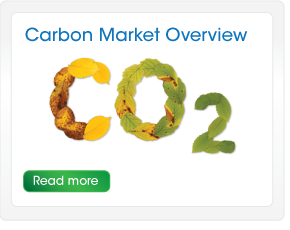 |
 |
 |
 |

Climate change is a critical, global issue threatening our planet. Carbon Dioxide gas emissions from fossil fuels have skyrocketed since the beginnings of the Industrial Revolution thus contributing to increases in average global temperature.
Importantly sub pollutants such as PM and NOX & SOX are a killer and are responsible for up to 6 million deaths per annum globally (et al LIM & WHO) and add significant economic costs to Governments, increasing health costs, reducing productivity and thus GDP and increase costs for related subsequent statutory benefits
Air pollution harms human health and the environment. A conservative estimate for one type of pollution (particulates) is that it reduces average life expectancy in the UK by around six months, worth £16 billion a year.
New EU regulations will set new standards in Air Quality & PM 2.5 on 01.01.2015 –
http://ec.europa.eu/environment/air/quality/standards.htm
https://www.gov.uk/air-quality-economic-analysis
In Hong Kong they appear to have their finger on the pulse… and have an amazing calculator…
http://hedleyindex.sph.hku.hk/home.php
http://www.ipcc.ch/report/ar5/wg1/#.UmzfffnIZwE
In china 8 year old Girl develops lung cancer
http://rt.com/news/china-pollution-girl-cancer-249/
According to the United Nations Intergovernmental Panel on Climate Change (IPCC), which is comprised of the world’s leading scientific experts in the field of climate change, the global climate is undergoing dramatic changes as the direct result of greenhouse gas emissions from human activity. Climate change is already apparent as evidenced by higher temperatures, rising sea levels, increased ocean acidity and polar ice melt. Global surface temperatures, alone, have increased by roughly 0.74 °C (1.33 °F) between the start and the end of the 20th century. According to the IPCC these trends are set to continue to accelerate far into the 21st century and will be accompanied by new changes such as increases in extreme weather events like floods, drought and hurricanes. In fact, according to the IPCC’s latest findings, global average temperatures will probably raise by a further 1.1 to 6.4 ºC (2.0 to 11.5 ºF) this century, depending on the extent of continued greenhouse gas emissions.
Greenhouse gases (GHG) are gases in the atmosphere that act like a blanket or glass roof around the earth, trapping in heat that would otherwise escape to space – this is commonly referred to as the “greenhouse effect”. Since the Industrial Revolution 200 years ago, mankind has been releasing unprecedented amounts of greenhouse gases into the atmosphere, which trap more heat, amplifying the natural greenhouse effect.
Carbon dioxide (CO2) is the most significant greenhouse gas released by human activities and is emitted mostly from the burning of fossil fuels like coal, oil and natural gas. Other greenhouse gases include methane and nitrous oxide. The global drive to reduce GHG centres on the Kyoto Treaty and subsequently introduced Emissions Trading Scheme (ETS), with emissions capping and subsequent carbon trading and offsetting markets.
Technological solutions that exist for reducing greenhouse gas emissions can take years of development. While these technologies come with a price, it is far outweighed by the possible result and subsequent cost of inaction. Financing these technologies, however, remains a challenge, Sources of finance , such as the ETS are have been implemented to mobilise the necessary changes, investment and financial flows to address climate change now.
The Kyoto Protocol has sanctioned offsets as a way for governments and private companies to earn carbon credits which can be traded on a marketplace. The protocol established the Clean Development Mechanism (CDM) http://unfccc.int/kyoto_protocol/items/2830.php,
It has created the infrastructure which validates and measures projects to ensure they produce authentic benefits and are genuinely “additional” activities that would not otherwise have been undertaken. Where Countries and Organisations are unable to meet their emissions allowances, they can offset their emissions by buying CDM-approved Certified or verified Emissions Reduction certificate, either to voluntarily offset or offset where required by regulation.
Historically the majority of carbon credits have been created in carbon reduction projects using forestry and or static applications when one of the largest contributors to pollution globally is invariably caused by transport and mobile or static internal combustion engines which burn fossil fuels.
Our revolutionary transportation and internal combustion engine emissions reduction and certification program for the reduction and measurement of air quality improvement and co benefits / economic analysis for internal combustion engine emissions (ICEs) under a certifiable program for carbon credit creation is now being implemented, under licence and in partnership with qualifying countries and strategic partners.
In the interim period to full electric vehicle and zero emission vehicle roll out, we have established that there is a sustainable route to still allow the use of fossil fuels – however the effects of CO2 and pollutants can be decomposed and mitigated providing considerably cleaner air and reduced CO2 – at point of combustion
https://www.nabu.de/imperia/md/content/nabude/veranstaltungen/131015-nabu-clean-air-antwerp-cuppens.pdf
We are currently developing projects in Asia, South America, Africa and the EU and simultaneously assessing other suitable regions and countries with strict criteria applied. We have identified considerable potential for multiple technologies. Along with our project partners with experience spanning the Clean Development Mechanism (CDM), Joint Implementation (JI) and Certified emission reductions (CER) and Voluntary Emission Reduction (VER) projects, we believe we can have a significant if not wholly influential impact on reducing emissions globally, providing transformational impacts for the transport and other sectors with some of the World’s leading authorities in CDM projects and Globally renowned environmental specialists already committed to the project, for projects that are scalable and replicable across multiple sectors under CDM – NAMA – T-NAMA and POA.
All our projects have significant co benefits and include economic analysis of co benefits of reducing PM 2.5/pm 10 by up to 86%, NOX, SOX by up to 70% and CO2 by up to 55%, and will be of interest to Governments, NGO,s Municipalities and Corporations wishing to improve Air Quality in cities and reduce CO2 at the same time

